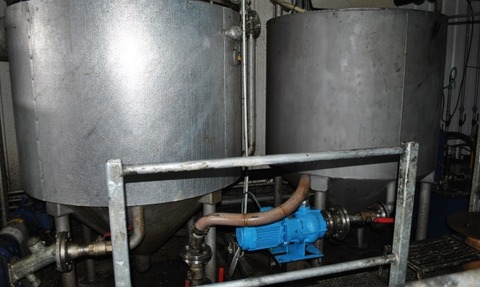Expert eye on pump preference
31 May 2013

Mike Heap, director of Verder UK and Paul Smith, Verder sales representative, take a look the different pumps available for anaerobic digestion and biofuel extraction.
Reducing the cost of food waste disposal into landfill is a key performance indicator for industry. This has led to an increase in biogas processes, and with it, an increase in the variety of pumping solutions required.
For example, a brewery in Norfolk has installed an anaerobic digestion facility for producing biogas to be fed into the national gas grid.
There is always a risk of an ‘upset stomach’ from ingesting the wrong material into the anaerobic digestion process
The facility is fed with kerbside-collected food waste, food processing waste, supermarket food waste and brewery waste including waste from its own outlets.
The organic matter enters into a feed inlet at the start of the process where a rotor chopper breaks down the raw material.
Peristaltic hose pumps move the chopped slurry from holding tanks and through a heat exchanger to raise the temperature prior to entering the main anaerobic digestion facility.
As the hot organic material enters the main facility it is dosed reliably and accurately by a peristaltic pump with an inorganic pH buffer to accelerate and maximise the breakdown of the material.
Another set up has been developed by an energy utility in Scotland which separates plastics and metals before the waste goes into a large mincing machine to produce a pulp. This is then fed into the digestion process, going through several polymer tank sections.
Because of its high viscosity a large and expensive positive displacement pump would normally be used but a centrifugal screw channel impellor pump is suitable for sludge and slurry, paper pulp, effluent, mash and many other fluids which are viscous or have a high solid content.
Where a product needs to be drawn from a tank, a peristaltic pump provides exceptional suction lift, so it can vacuum the dregs up and abrasion is not an issue. It can also run dry without damage whereas progressive cavity pumps and rotary load pumps would destroy themselves.
Meanwhile, a centrifugal pump has fewer, easily made components and therefore costs less than a positive displacement pump - for a given flow rate, it will have a smaller footprint.
It is also more energy efficient than a positive displacement pump and uses a smaller motor, typically from 2.2 to 7.5kW.
The same centrifugal screw channel impellor pump is suitable for potato and carrot peelings, as well as by-products from abattoirs and slaughterhouses. These include internal organs in poultry preparation for example.
They are also suitable for processing by-products from fruit juices. Oranges are squeezed to dry husks in a juicing process and in the past these would have gone to landfill.
A contractor involved in developing a trial system for recovering oil from orange husks previously used rotary load pumps with little success. The application involves feeding a centrifuge and pumping highly abrasive products where a rotary load pump would normally be used to handle the viscosity.
The centrifugal pump has already outlasted, by two weeks, the rotary load pumps that were previously used, which were lasting only 200 working hours at most - or roughly two weeks.
There is always a risk of an ‘upset stomach’ from ingesting the wrong material into the anaerobic digestion process, and, in the same way that humans can take a dose of medicine to relieve an upset stomach caused by a pH imbalance, one user doses in sodium bicarbonate (NaHCO3), also known as bicarbonate of soda, to counteract the problem.
Companies need to operate at a certain scale to make this kind of energy recycling work, so smaller scale domestic recycling has to be coordinated by local councils and municipalities to produce bio gas from tonnes of incoming material on a daily basis.
In contrast, snack and potato food manufacturers like Mars, Walkers, Unilever, Seabrook and McCain will have in-house waste management facilities. A pump manufacturer needs to work with both kinds of pioneers in the biogas industry to maximise production. Advising on the right pumping solution is vital to success of biogas projects throughout the country.

